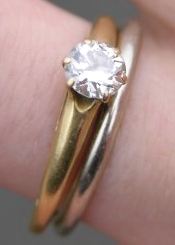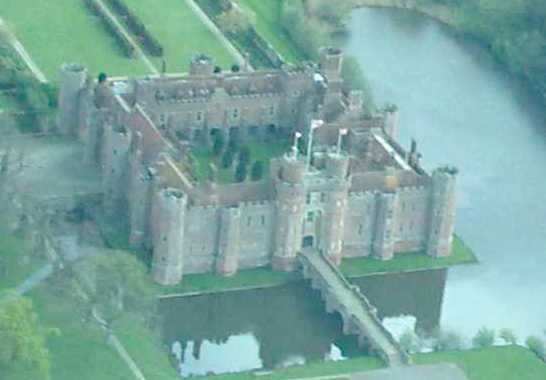|
BATTLE - EAST SUSSEX
Please use our A to Z INDEX to navigate this site
|
|||
|
Sussex is a glorious county, the so-called garden of England and for very good reason. I've lived in Sussex most of my life, including: Brighton, Eastbourne, Seaford, Newhaven, Hadlow Down, and of course Herstmonceux.
There is so much of interest to see and do in the United Kingdom, and we hope to expand the local geography section as time allows, to cover the most interesting aspects of this wonderful country.
Battle is a small town in East Sussex, England, about 5 miles (8 km) from Hastings, and the site of the Battle of Hastings, where William, Duke of Normandy, defeated King Harold II to become William I.
Battle Abbey takes its name from the town, founded to commemorate the battle, and dedicated in 1095. The high altar of the Abbey church was reputedly on the spot where Harold died. The Abbey gateway is still the dominant feature of the south end of the main street, although little remains of the rest of the Abbey buildings. Although referred to as 'Battle Abbey', it is actually named 'St Martin's Abbey'.
Battle, East Sussex
The town of Battle was gradually built around the Abbey, and later developed a reputation for the best gunpowder in the whole of England, produced in Powdermill Lane. The gunpowder works is no more, but the remains can be seen in Powdermill Lane, after the Duke of Cleveland refused to renew the license in 1847 after many mishaps, including one occasion in 1798 on which more than 15 tonnes of gunpowder was left in the oven for too long and exploded. Battle is still renowned to this day for its Fireworks Night procession and celebration.
The importance of Bonfire Night in Battle is because it is located in the wooded Weald of Sussex. Most of the area was heavily wooded, which provided oak and other timbers for Navy Shipyards, power for making cannons (shipped to Portsmouth or Chatham), cannon balls and, of course gunpowder. In the mid 1700's, Battle once supported five watchmakers in the High Street. For more, see Guy Fawkes Night.
Battle also was a refuge in World War One, and tunnels still exist, leading from various fields and cellars to Battle Abbey itself. However, they are deemed unsafe and are now closed.
The band Keane hails from Battle.
Everyone knows at least one date in English history - 1066, the year the invading Normans defeated the Anglo-Saxons at the Battle of Hastings. In fact the two armies did not fight at Hastings, but at a place by the town now named Battle. In the ruins of Battle Abbey, which King William later built to commemorate the event, you can stand on the very spot where the defeated King Harold fell.
Battle Abbey aerial view East Sussex
The battlefield - later part of the abbey's Great Park - and the abbey were purchased for the nation in 1976.
A substantial portion of the abbey buildings remain, but little of the early Norman structure is left. Best preserved and most impressive is the Great Gatehouse, rebuilt c. 1338 and arguably the finest of all surviving medieval abbey entrances. The west range of the monastic cloister, incorporating the medieval Great Hall of the abbots, was adapted as a country house by Tudor and Georgian owners after Henry VIII's Dissolution of the Monasteries.
The museum in the gatehouse takes a look at the monastic history of the site, and includes artefacts uncovered in excavations over the years.
Visit the Discovery Centre, housing an activity-based exhibition available to pre-booked school parties and open to families at weekends and throughout the school holidays. There is also a themed childrens' outdoor play area.
The interactive audio tour re-creates the sounds of the battle as you stand where the Saxon army watched the Normans advancing towards them. The battle raged for some hours with neither side gaining an advantage, until the Normans pretended to flee, but then turned back to cut down the Saxons who had broken ranks in pursuit. Open battle raged until the death of Harold, perhaps struck in the eye by an arrow as depicted in the famous Bayeux Tapestry. The spot where he is thought to have fallen was marked by the high altar of the abbey, founded by William the Conqueror c. 1070 to give thanks for his victory.
Battle Abbey drawing
Battle Observer 10 December 2004: Reported the news that Sarah Ingram was granted the freedom of Goldsmiths at the Goldsmiths Hall after completing a five year apprenticeship. Ms Ingram studied jewellery design at London Metropolitan University. Sarah's father, Keith Ingram is a member of the Institute of Professional Goldsmiths as a diamond mounter.
CONTACT: Keith Ingram Spectrum Fine Jewellery Limited, 46 High Street, Battle, East Sussex Telephone: 01424 774404
Wedding rings
Battle Abbey sandstone tower and walls
Herstmonceux Castle
SUSSEX INDEX A - Z
ARUNDEL CASTLE - WETLANDS WILDFOWL TRUST BEACHY HEAD - BELL TOOT (BELLE TOUT) LIGHTHOUSE BISHOPSTONE CHIDDINGLY - HORSE SHOW and GYMKHANA CUCKMERE VALLEY - EXCEAT EAST
SUSSEX HADLOW DOWN HERSTMONCEUX - CASTLE - CE SCHOOL - LINKS - FESTIVAL - MUSEUM LIME PARK - HERSTMONCEUX - AUGUSTUS HARE SHOREHAM - PORT SUSSEX - SUSSEX BAY, MARINE REWILDING PROJECT TWISSELLS MILL, OLD HEATHFIELD WEALDEN DISTRICT COUNCIL - COUNCILLORS 2023
Solar Cola drinkers care about planet earth
.. Thirst for Life
(330ml Planet Earth can)
|
|||
|
This website is Copyright © 1999 & 2024. The bird logo and name Solar Navigator and Solar Cola are trademarks. All rights reserved. All other trademarks are hereby acknowledged. Max Energy Limited is an environmental educational charity.
|






